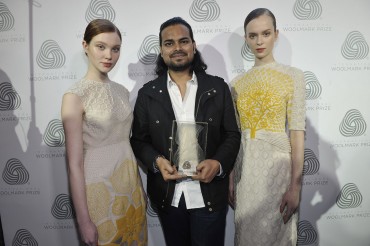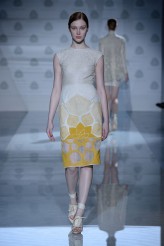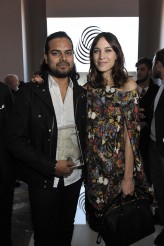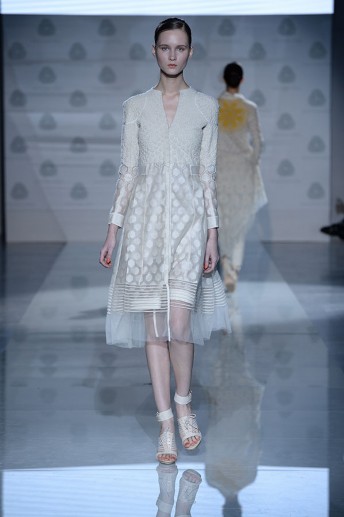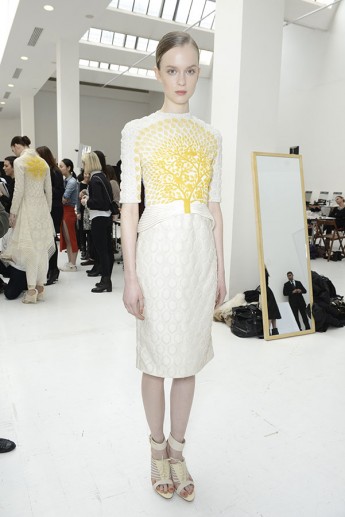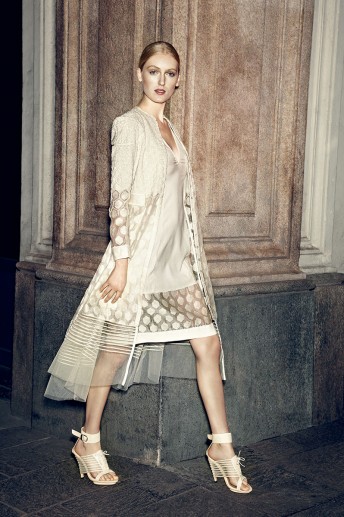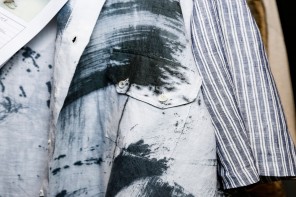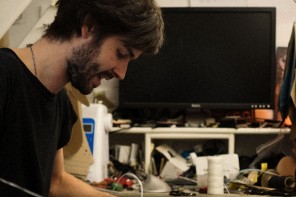Florence, Italy–Rahul Mishra, the Mumbai-based designer who nabbed the 2014 Woolmark Prize, is taking the world by storm with his modern twist on Indian fashion known for its intricate, artisan detail . Now that Mishra has made a global name for himself — selling his collections at high-end stores Harvey Nichols and Colette — he is on a mission to reverse-migrate skilled workers out of the city slums and back into artisan villages, where they are poised to flourish.
BACO caught up with the Marangoni alum at the fashion institute’s 80th anniversary celebration at Florence’s Palazzo Corsini.
How has life improved for the 100 artisans you are working with?
When we started the process, 80 percent of those employed in the slums were sending back 80 percent of their earnings back to their villages so their families could build homes and their kids could go to school. People were suffering to sustain their families and living in places where they didn’t even have a toilet.
We started an initiative to put them back into their villages and promised work for them. Since then, their earnings have grown more than 30 percent.
How much of your collections are crafted by artisans?
Most of the work and products we generate come from villages. Items sold in Harvey Nichols and Colette come from the villages. The idea is that if I can design a system where I can employ more people in villages, it would ultimately lead to cleaner cities and better living conditions.
A big issue in the fashion industry, is that artisans are not being paid as much as they deserve to be paid. How much are you paying your workers?
About 70 percent of turnover of the entire company goes into paying our artisans. We are a profit making company. It is very important for me to respect the artisans because they are generating the earnings.
Your collections are so detailed – this is what makes your line stand out. How is the artisan at the heart of your brand?
Perfection only exists in man made things. This degree of perfection that hand work brings, justifies the work.
Right now we are working with 500 people across several villages – my core copmany is in a suburb of New Delhi – where we have a factory. The workmanship happens in the villages. I am also working with wool farmers in villages in Australia. My brand is going to stand for villages across the globe. Afghanistan, out of Nigeria and all that..
Is India is facing the challenge of passing on the artisanal trade?
For me, everything is driven by money. I do not expect a craftsman’s son to get into this position and be able to buy an expensive car and live a very comfortable life. This is a choice you are willing to make. For me, the question is how can I make these people get more money? Some of our weavers, are driving cars right now. They have the iPhone 6 and they communicate with me through Facetime. It is through Facetime and Skype that we are all able to manage this production. If we are not able to show this generation the MONEY and the RESPECT they can earn by practicing one art form – it will all eventually die and be preserved in a museum.
Why is dying artisan craft such an issue worldwide?
The competition. One mill that creates millions of meters of fabric, is, in a way, contributing to unemployment. Fashion has to rise to the occasion. Luxury has to work on ways of NOT creating quick, mechanical-made clothing.
This is where designers can bring about change. They need to work with artisans and at the same time be able to make clothes look modern.
Hope for the future?
My dream is to work with over 1 million people.
The average age of the people we work with is 35, many of whom come from family traditions. One of our workers, for example, is a weaver living in a small hut. He dropped out from school and can hardly write his name in Hindi. Today he has a 2-story house, he bought a car. I cannot think of any part of fashion that can bring so much empowerment to someone who has never gone to school. Globally fashion needs to look at fashion as not just a vanity item. People need to understand that fashion can change this world.
I want to see fashion winning a Nobel Peace Prize.
____________________________________________________________________________
ALSO IN THE EMPOWERING ARTISANS ISSUE: Period Features: Japanese Design, Indian Sari Craft, BACO Getaway: Namibia, Kinsfolk: Sri Lankan Craft, Swiss Style , OWL: Paris’ Link to African Fashion, Hirofumi Kurino: Japan’s Oracle of Fashion, Rahul Mishra on Empowering Artisan Villages



